Seattle crows are among the most famous of modern crows, owing to studies by John Marzluff which are featured in A Murder of Crows. This PBS Nature episode looks at Marzluff’s University of Washington (UW) research projects and the crows’ ability to recognize and remember human faces.
I’ve seen a few UW-banded crows around town, but they’re usually wheels up with a Cheeto before I can pull out my camera. The other day, I saw another one of these banded celebrities — bathing, foraging and preening with a huge flock of crows that often congregates at Seattle’s Lake Union before flying off to evening roosts. This time, the crows weren’t going anywhere. They had afternoon sun, placid waters, and all passing dogs safely restrained on leashes. It was a crow’s dream afternoon … even if it still amazes me that crows enjoy bathing on a 30-degree day.
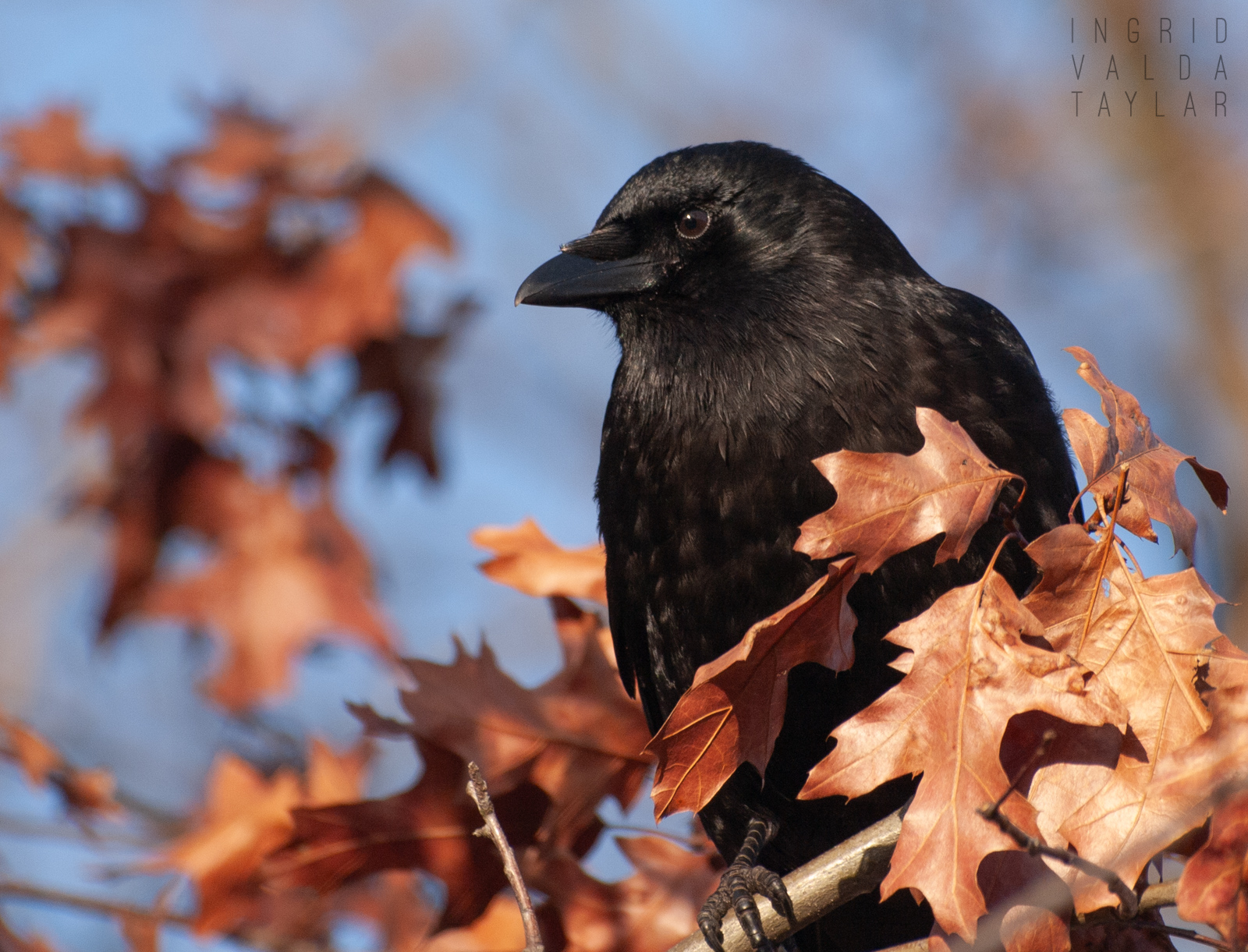
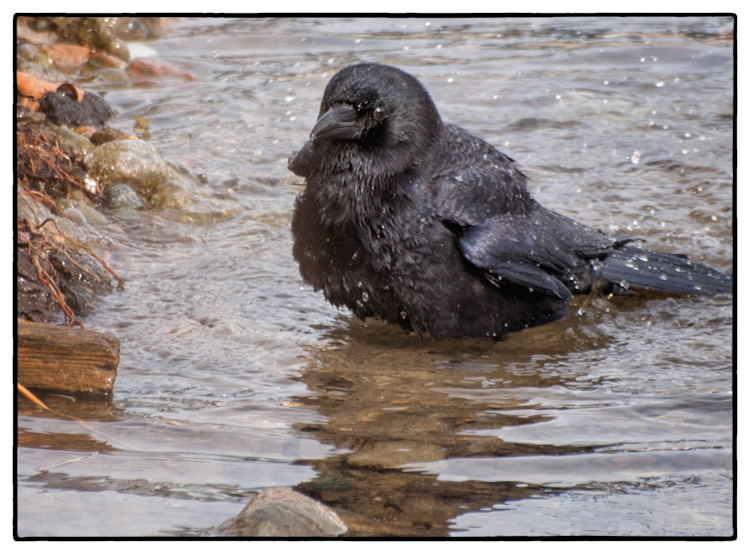
I reported the bands to the Seattle Crow Survey, even though I’m not sure how actively the bands are being traced. The last posted research results at the site are from 2004. I did my best to identify the colors for the online form (is that orange or red? Light blue or dark blue?). I also discovered that after 2003, researchers added two colored bands above the metal USFWS band on the left leg. This crow had one plastic band below the metal band, which leads me to believe that he or she may have been banded before 2003.
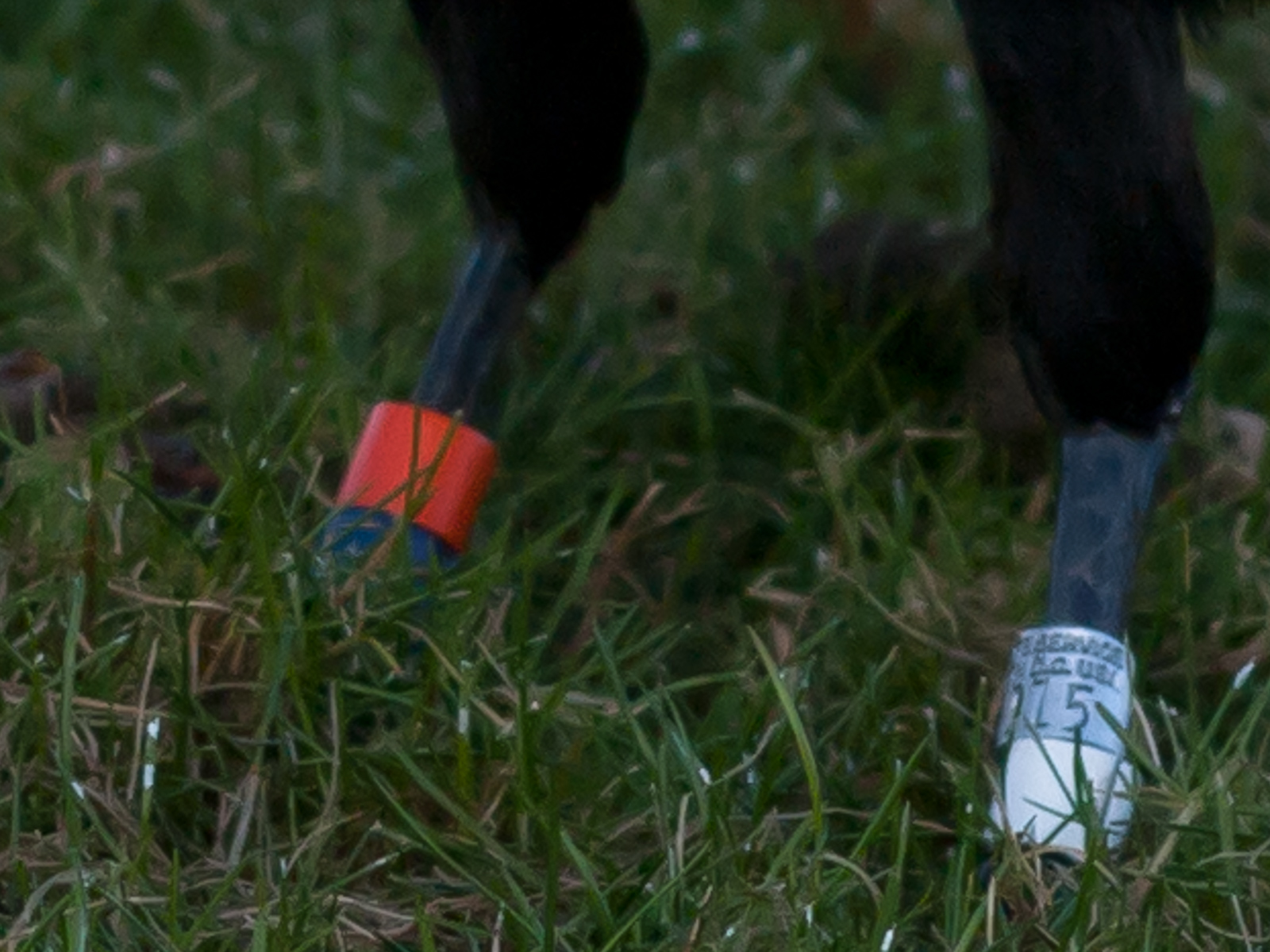
This crow was digging up divots in the grass, looking, possibly, for grubs. The crow listened intently before each excavation, and crows do hear the sounds of grubs noshing. Note the flying chunk of lawn, upper right.
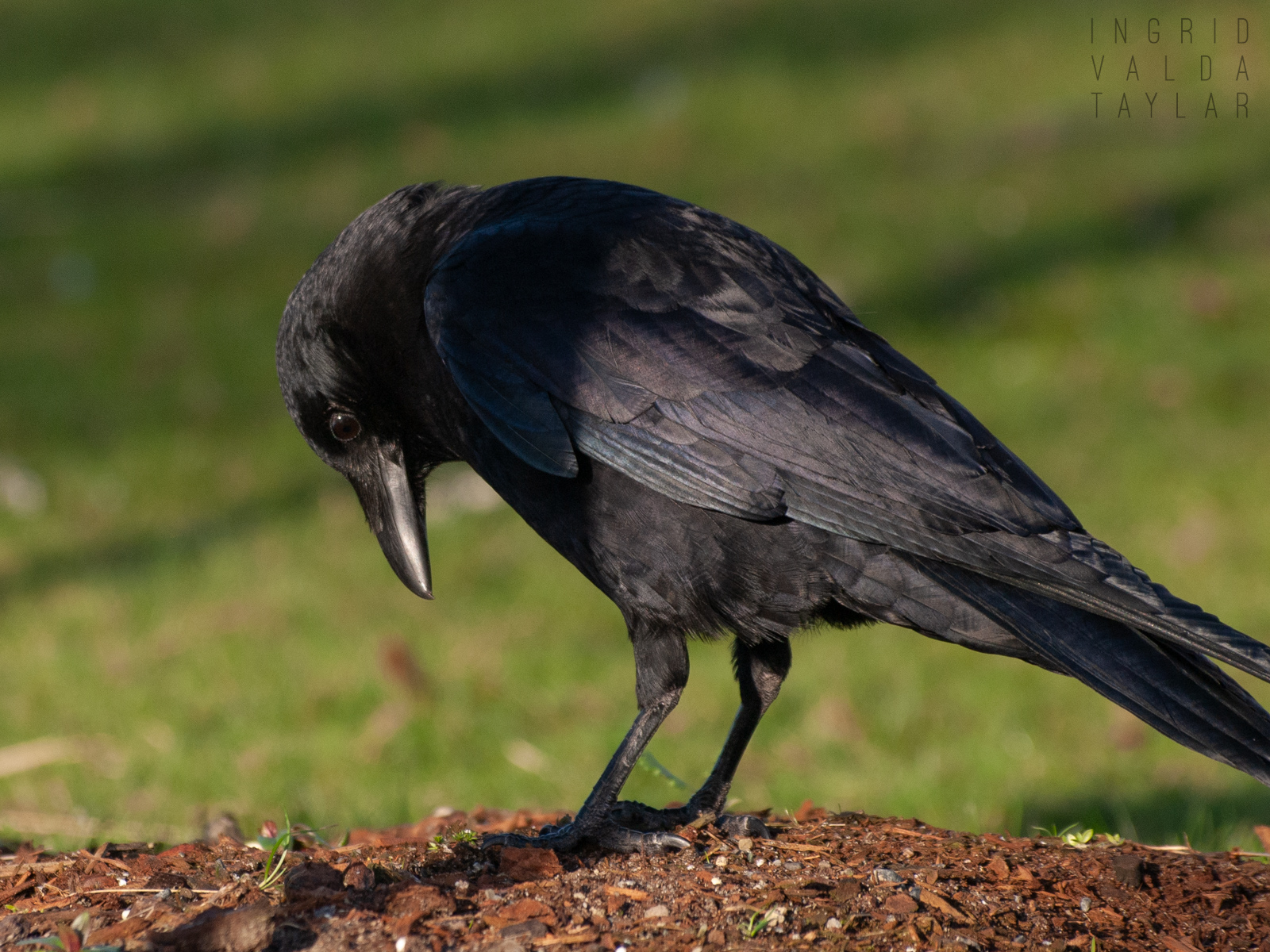
I shot this magic-hour image of the banded crow, and he pulled the old nictitating membrane trick on me as my shutter clicked. When my cat does this — sleeping with her eyes open, membranes twitching — I call her “ghost cat.” So, I guess it follows that this double-banded crow was ghost crow.
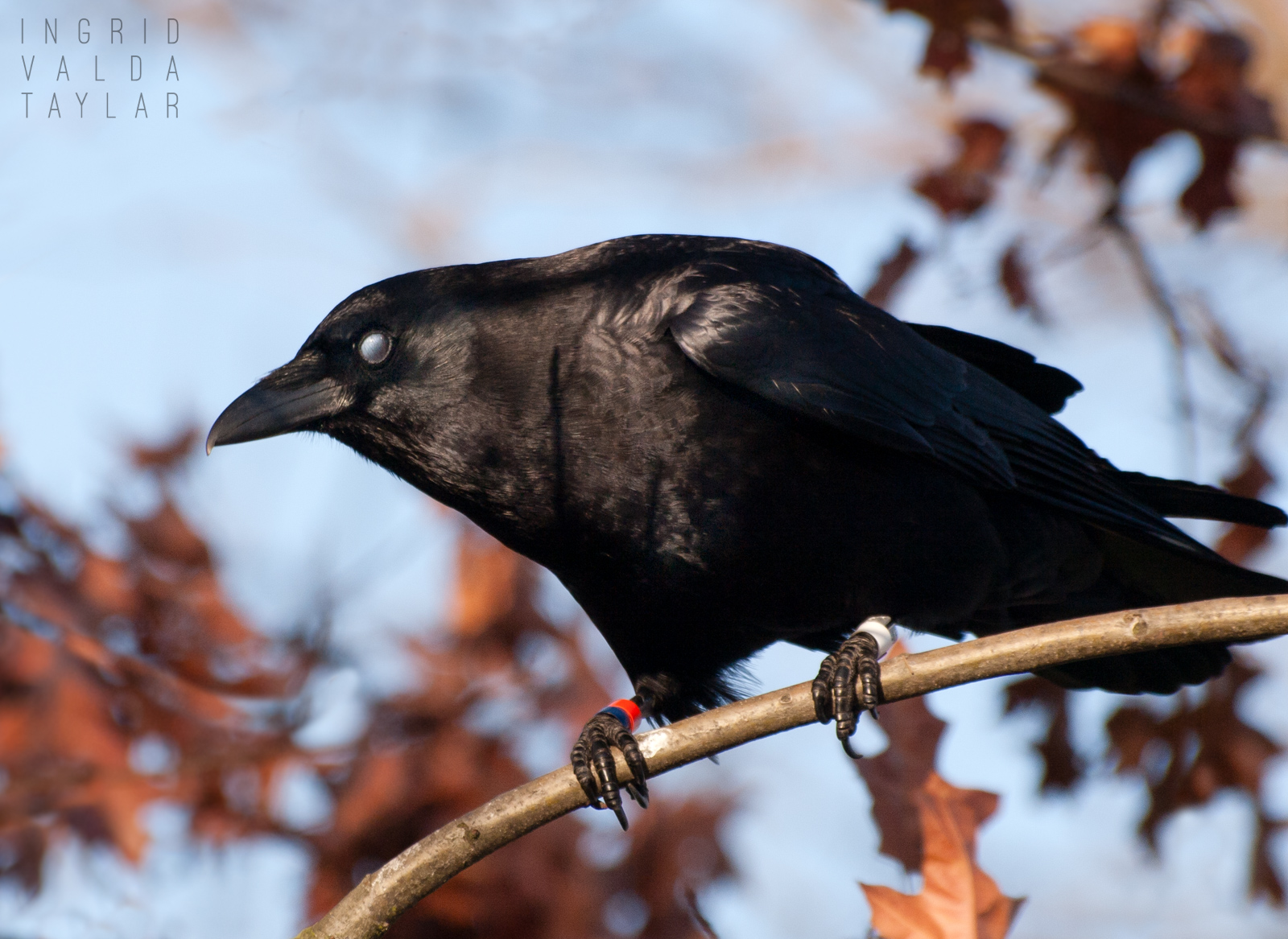
In doing some follow up research on the banding issue, I got distracted with this great video at TED — on the topic of crow intelligence. I’m not sure I agree with Klein’s conclusion about putting crows to work for us, but the crow vending machine he devised is testament to the intelligence we already know crows possess. Here’s the video. Klein is a good speaker, so it’s an easy watch.

Ingrid, I love that close up shot of the crow, the warm light and setting set off the gleaming black plumage so well. It seems to me that many of the corvids pull the nictitating membrane trick. I can’t tell you how many shots I have deleted because everything was near perfect except for that membrane.
Very good of you to report the bands, I always report banded birds in the hope that the resightings will help us to better understand them and to possibly help with conservation efforts.
Mia, I always hope the banding project is still registering numbers and tags, because I see animals with somewhat invasive tracking devices (those awful orange wing tags and neck tags) and always think about the animal having to sport those things long after the study wears out its utility. There’s a big controversy up here in the Northwest over Orca tracking. US officials are air-gunning double-pronged tags into several Orcas, and researchers on our side and officials on the Canadian side have been countering (or at least questioning) the benefit vis-a-vis the invasiveness.
Ingrid, there is an additonal website where banded/tagged birds can be reported at: https://www.reportband.gov/ Because your crow has a metal Federal band they might have a more updated database. Also they usually reply back with information on when & where the bird was banded and sometimes the approximate age of the bird.
I’ve seen, reported and photographed a female Lesser Scaup in Montana that had a radio antennae sticking about a foot above its rump, that seemed like it would be difficult for the bird to adjust to but she did have a mate swimming with her each time I saw her.
I’ll see if I can get a full read on the federal number. Good idea, thanks, Mia.
I always think animals have it all over us in terms of their interaction with life and circumstances. That’s quite a transmitter the scaup had going on. And yet, she also seemed to have it going on. Do you suppose it was one that eventually came off, as some of them do? And — did the placement appear to interfere with mating? It almost sounds like it.
btw, I realize there’s a balance inherent in every research project. I photographed the tagging of the California Clapper Rails a few years ago. Those transmitters are huge but I have to believe the data is helping with habitat restoration around SF Bay. The orca thing … they’re doing some amazing studies through collecting orca scat, such a non-invasive technique. I do appreciate when those methodologies come into play. The orange wing tags on white egrets … I’m not sure I’ll ever be reconciled to that, though.